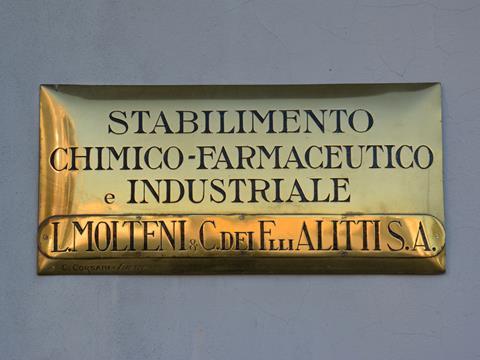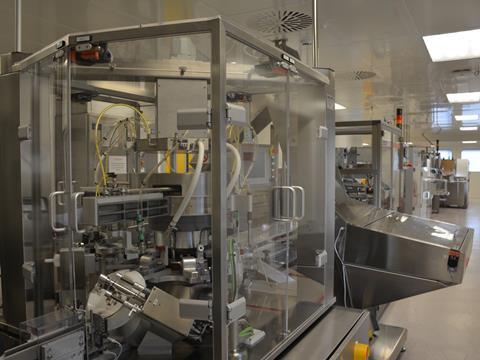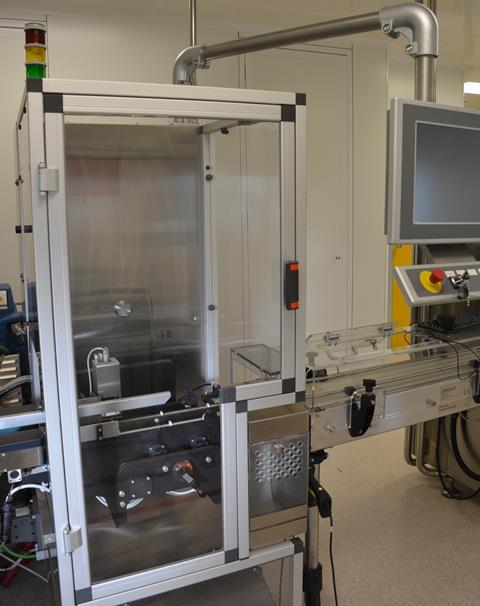
The costs of serialisation are significant – which is why many businesses are taking a keen interest in ways to spin this into a healthy ROI. Tim Sykes spoke to Tiziano Petrucciani, quality & technical development director at Molteni Farmaceutici, the renowned Italian specialist in pharma R&D and production, about the company’s collaboration with Rockwell Automation, using serialisation as a springboard for a profound modernisation of its manufacturing processes.
Our old friend Directive 2011/62/EU and the related Delegated Acts require manufacturers of medicinal products to develop the capacity to apply to each package, verify and transmit, a unique identifier, which must be printed both in clear form and a data matrix code. In addition, pharmaceutical companies that are marketing authorisation holders are mandated to send serialisation data from their products to a European Hub.
An undertaking of this kind involves a considerable organisational, economic and cultural effort for companies, according to Tiziano Petrucciani. “Organisational, because the complexity of this project requires, above all the involvement of top management and the establishment of a multidisciplinary team where the roles must be well defined and in which there are skills in IT, manufacturing, pharmaceutical engineering, quality, regulatory areas and in the legal area,” he remarked. “Economic effort, because the company has to bear the costs for the creation of a complex IT and technological infrastructure able to support this type of process that includes, among other things, a constant data exchange between machines, production lines and software platform of the site that manages the production lines, and also between the site of the AIC Holder and the European Hub. And finally, also a cultural effort, just because every technological improvement must always be accompanied by the introduction of new skills and knowledge.”
In considering this formidable task, Molteni concluded that it faced a choice between two possible solutions. The first was a stand-alone software system that would simply manage the serialisation process. The second would be to introduce a Manufacturing Execution System (MES) platform that not only guaranteed the correct implementation of the serialisation management process, but that could also be the starting point for a process of technological innovation, allowing a quality leap in manufacturing systems, in terms of quality and production efficiency.

“Our company decided to orientate itself to the second option and selected, for this purpose, Rockwell Automation as a partner able to support such a complex and ambitious project,” revealed Mr Petrucciani. “Rockwell was able to provide an MES product on which to realise a modular, flexible, scalable and configurable solution, able to incorporate the variability of European and extra-European Regulations and to support the implementation of possible future technological achievements.”
Holistic solution
According to Alessandro Stroscio – MES functional consultant, system & solution business life sciences, Rockwell Automation – the basic requirements of such a solution are data managements, scalability and integration: “A solution must be flexible with an efficient architecture, whose interfaces must be separated in terms of technology and data processing. It also has to guarantee uniqueness and ownership of the data throughout the flow of information between all the levels from shop-floor to the external supply chain and supranational repositories. Furthermore, in the life-cycle of a serialisation product you might need to shift from a pilot line to management of multiple lines and possibly to deploy the solution to several production sites. You may have to migrate to new technologies, deal with new regulations and cover new markets. Finally, the customer needs to realise its investment by integrating the product successfully on the shop-floor. So we need to manage the diversity of technology and product formats at a line level, also with scope for new serialisation technologies to be added.”
To meet these needs, Rockwell developed a holistic serialisation solution: a modular architecture consisting of several components working together, built on the platform of our off-the-shelf PharmaSuite with all the extended functionalities needed to cater to the specific requirements of serialisation.
“PharmaSuite provides a complete solution to centrally model all the different packaging lines installed on a production site, manage master data and serialisation data (such as materials, recipes, packaging orders and, of course, serial numbers) and to handle all the serialisation activities to be performed at runtime on the shop-floor,” said Mr Stroscio. “The set of components includes both interface with production devices, and communication with external systems like ERPs, Serials Management Systems, EPCIS-certified repositories and central authority repositories (such as a HUB) identifying an architecture that provides interoperability across all the five levels of the ISA-S95 model. A key principle for us is that we integrate devices with open protocols and standard communication techniques that do not force customers to buy a black box and a closed system. In the future RA will be adopting the Open-SCS protocols, which will guarantee even more interoperability across different technologies and levels.”

Opportunity for innovative growth
In implementing this solution, Molteni sought to go beyond regulatory compliance and use its new connectivity as a spur for technological development – allowing an efficient data exchange, both within the manufacturing site and also outside, including with databases of CMO or other MAH, or with regulatory agencies.
“This aspect will make it possible to achieve continuous improvements in company flows and, in particular processes with GMP impact,” Mr Petrucciani stated. “The progressive interfacing of the production system will allow to constantly monitor its efficiency and effectiveness and to have a robust, paperless documentation available, in order to support the conformity of the manufacturing process. Moreover, we have a vision of how to leverage wider benefits in the future, such as using PharmaSuite to supervise and monitor efficiency of our packaging lines, optimising maintenance and quality control.”
This is indeed the core message of Rockwell’s approach to serialisation. “Going beyond compliance with serialisation regulations, thanks to shared data management and leveraging cloud repositories brings opportunities to optimise a business,” Mr Stroscio reflected. “As part of this there is an opportunity to create new marketing and value-added products for the end user, who can make data-driven decisions. All the stakeholders throughout the supply chain can leverage this real-time information.”
While regulation may be the initial driver, there are significant business benefits associated with supply chain optimisation. “You can have complete supply chain traceability, increased security and efficiency, and notifications directly to the customer,” Mr Stroscio continued. “In terms of optimisation, you can achieve improved forecasting, optimised inventory, more accurate business planning. Our customers are using serialisation as a driver of digital transformation: business optimisation based on data management.”












